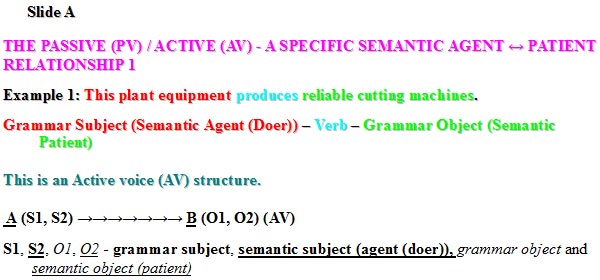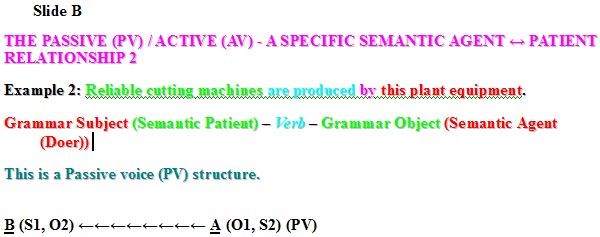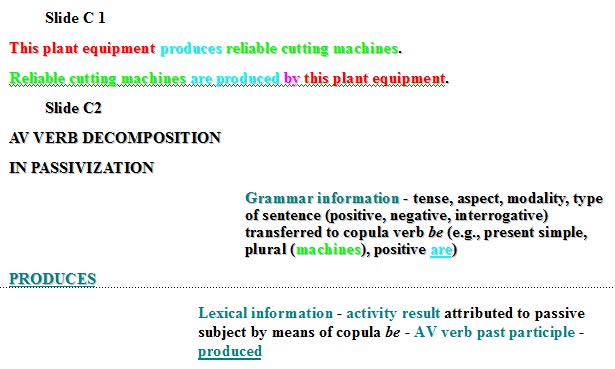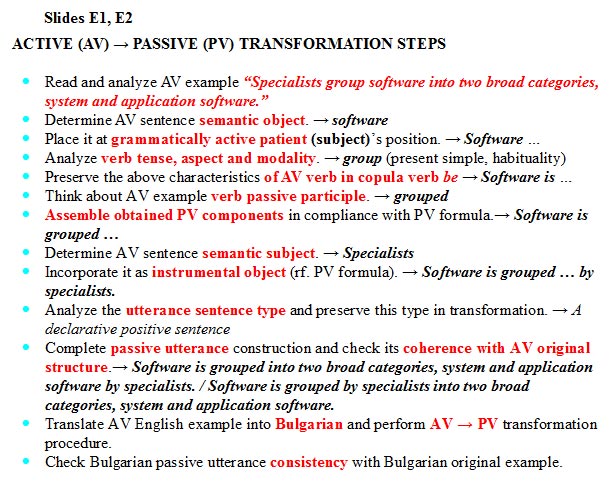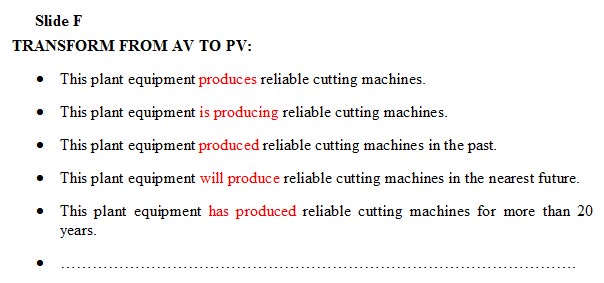Издателство |
| :. Издателство
LiterNet |
Медии |
| :. Електронно списание LiterNet |
| :. Електронно списание БЕЛ |
| :. Културни
новини |
Каталози |
| :. По
дати : Март |
| :. Електронни книги |
| :. Раздели / Рубрики |
| :. Автори |
| :. Критика за авторите |
Книжарници |
| :. Книжен
пазар |
| :. Книгосвят: сравни цени |
Ресурси |
| :. Каталог за култура |
| :. Артзона |
| :. Писмена реч |
За
нас |
| :. Всичко за LiterNet |
MULTIMEDIA USE AND ELT LANGUAGE AWARENESS ENHANCEMENT IN UNIVERSITY CONTEXT
Boryana Ruzhekova-Rogozherova
Abstract: The current paper treats ELT multimedia implementation as a language awareness and motivation improvement tool in university context, supporting the application of essential cognitive procedures, among which, pattern observation, exploring categories in terms of form / semantics, contrastive and comparative teaching, hypotheses construction and verification, encouraging learners in acquired knowledge parameters assessment and in setting their own learning objectives. Special attention is paid to PowerPoint presentations layout and content creation with the purpose of language awareness components enhancement and, thus, better knowledge formation. Conclusion is inferred with respect to multimedia use cognitive and motivational benefits in ELT.Key words: multimedia, language awareness, motivation, cognitive teaching procedures
Резюме: Настоящата статия разглежда използването на мултимедията в университетското обучение по английски език като средство за подобряване на езиковата осъзнатост и на мотивацията, подкрепящо прилагането на основни когнитивни подходи, като: анализ на типови структури, изследване на категориите във формално / семантичен аспект, контрастивно и компаративно преподаване, изграждане и проверка на хипотези, насърчаване на обучаемите в оценяването на параметрите на придобитите познания и при поставянето от самите обучаеми на собствени обучителни цели. Отделя се особено внимание на създаването на структура и съдържание при презентациите на PowerPoint с цел подобряването на компонентите на езиковата осъзнатост и, следователно, на познанията. Направени са изводи по отношение на когнитивните и мотивационни ползи от прилагането на мултимедията в обучението по английски език.
Ключови думи: мултимедия, езикова осъзнатост, мотивация, когнитивни подходи на преподаване
1. Introduction
There has been a number of applied linguistics research in the field of multimedia (MM) use predominantly in ELT, most of them focusing on MM implementation benefits and drawbacks and treating MM application in various tasks aimed at specific skills formation. Research papers frequently state that MM-based teaching does not have the potential and must not utterly replace black (white) board use, approved in theory and practice approaches in learners’ communicative competence building, a view I completely subscribe to. What is more and represents this paper author’s belief, is that MM ELT application is supposed to fully support and facilitate cognitive language teaching approaches directed at adequate mental representations construction1, these ones being a crucial prerequisite to further, more and more elaborate formation of language and linguistic concepts, which preconditions and guarantees various levels of learners’ knowledge creation2. Thus, current article’s objective is twofold - to present MM ELT successful role, on the one hand, as a powerful teaching and motivation improvement tool, based on previous researchers’ study, and, on the other, as a means of corroborating essential cognitive and metacognitive approaches (language learning strategies (LLS)3) and widening their scope of application with the purpose of ELT language awareness (LA)4 rising. MM use in supporting cognitive teaching procedures will be exemplified through author’s studies, research practical implementation in university context, mainly in the sphere of PowerPoint MM presentations content and layout organization5, greatly contributing to various LA components strengthening.
The paper will comply with the following layout: first, MM descriptive definition emphasizing on MM relevance of application, in contemporary context, will be drawn; second, some researchers’ views on MM implementation importance in ELT (and LT in general) will be referred to; next, MM role as a tool supporting cognitive and metacognitive LLS in LA improvement enhancement will be considered; finally, conclusion with respect to MM ELT cognitive teaching corollaries will be inferred.
2. Definition, scope and resultant MM ELT application
MM implements blending of information transmission media such as text, sound, image, animation and interactive materials, acting through advanced hardware and software and internet applications, this way attracting learners’ attention and study interest in case of purposeful and balanced use. Consequently, MM ELT implementation is in compliance with modern information society requirements related with not only more contextualized, authentic, varied, personalized and dynamic teaching means, approaches and activities use, but also with IT technologies application due to their almost universal presence in all spheres of human activity and education. Here below ELT MM application relevance will be corroborated through the perspectives of researchers, having worked in this sphere of applied linguistics6.
Thus, for example, in Zhu’s view (Zhu 2010), PPT courseware FLT use leads to teaching information increase, "improved class efficiency", enhanced visualization; better feedback stems from interactivity and "multi-dimensional multimedia information helps to cultivate students’ associative thinking" (ibid.: 68), associations promote taught material memorizing. MM use, along with Internet materials, facilitates discussions, pair work and extracurricular activities.
In Patel’s viewpoint (Patel 2013), MM use is essentially important in teaching communication; new technologies contribute to heightening interest, providing access to profuse information and also, offering "a sense of reality" (idid.: 118). MM implementation ameliorates teaching, as a result of vividness and authenticity of didactic materials, encourages lecturer - learner communication, increases learning, and also, teaching motivation due to the offered variety of teaching / learning procedures which can be applied, provides flexibility in study materials and procedures use.
Ampa 2015 emphasizes on listening skills formation within ELT through active MM implementation. Learners’ motivation is promoted by the opportunity of simultaneously analyzing audio, video, textual and graphic materials. A conducted experiment testifies to interactive MM use efficiency in listening skills teaching, listening activities having been successfully completed after appropriate MM materials application.
Pun 2013, along with already examined issues, draws the attention to more stimulation in teaching / learning process and the opportunity not only for communication and listening skills developing, but also for target language culture understanding. An important MM application advantage consists in facilitated learning by providing the option of outside the classroom teaching.
3. MM implementation in cognitive teaching procedures
Efficient MM ELT use is preconditioned by the above referred to advantages allowing higher degree of flexibility, versatility, authenticity, communicativeness and innovation. All pluses of technologies can be though benefitted from only if equipment and software are appropriately used to support and enhance various already approved in theory and practice teaching approaches. As already stated, this article section will be devoted to revealing and commenting on MM use in frequently implemented cognitive teaching procedures by the author in ELT (ESP) in the purpose of LA enhancement and mental representations formation at all levels of language description.
Essential MM supported cognitive approaches7 referred to in the following lines are: pattern observation; exploring taught categories in terms of form / semantics to promote better values differentiation and comprehension; contrastive and comparative teaching procedures (CT, CpT); knowledge schemes formation; information reorganization; summarizing; categories functioning hypotheses building and their verification; encouraging learners in their knowledge parameters assessment, in determining hardships and easily understood topics, in questions asking and setting learning objectives.
3.1. MM use in PowerPoint presentations
Objectives set by the author in PowerPoint presentations have always involved not only conciseness and clarity of material display, but also emphasis on essential taught categories characteristics, various ways of stress having the potential to attract learners’ attention and hence, to contribute to LA improvement in a specific language sphere. LA has the features of conscious language (and linguistic knowledge), of grasping of a language (and language phenomenon, in general) nature, of its functioning in all spheres of life, including teaching and learning, reflection on language categories and their implementation, linguistic thinking (rf. Malmberg 2001, ALA8 definition, Ruzhekova-Rogozherova 2014b). These characteristics enhancement can be developed through consciousness rising by means of LLS implementation (Ruzhekova-Rogozherova 2014a) to facilitate noticing9 and related cognitive phenomena, such as attention and understanding (awareness). As Schmidt (Schmidt 2010: 731-732) states, "...to the best of my knowledge, no study has ever shown that people learn better in dual task conditions than in single task conditions, or that ignoring grammatical forms in input results in better learning outcomes than noticing forms and forming hypotheses about them." Here below promoting noticing through MM assisted cognitive approaches implementation will be considered.
An exemplifying PowerPoint presentation developed by the author to assist diatheses teaching to PhD students will be referred to. Individual slides (or slide components) will be offered to readers’ attention and then commented on.
Referred to PowerPoint presentation slides make use of approaches aimed at corroborating essential LA components, such as noticing and understanding, and supporting, with that end in view, the above mentioned cognitive teaching procedures implementation.
Thus, for example, slide A entitled "The Passive / Active - a Specific Semantic Agent ↔ Patient Relationship1" focuses on revealing diatheses, and more precisely, AV/PV structures, essence and purpose, and namely, on conveying a characteristic semantic relationship through a typical grammatical construction. To facilitate noticing and, attract learners’ attention at patterns and grammar ↔ semantics connection, an AV exemplifying sentence is presented, each of AV components given in different colours; subject / agent, object / patient relationships are symbolically and schematically conveyed; bold and underlining equally contribute to better categories differentiation. Slide outline and content can be used in learners’ introduction to taught material, as well as in eliciting characteristic features of examined categories through observation questions. Learners are supposed to start building the understanding of grammar subject / agent and grammar object / patient coincidence in AV, along with agent’s primary, in meaning perspective, role.
Slide B, entitled "The Passive / Active - a Specific Semantic Agent ↔ Patient Relationship 2" focuses on diatheses understanding deepening through PV form / semantics connection parameters noticing. Cognitive procedures implemented in this slide layout and content are analogous to the previous one, slide B having equivalent study objectives to slide A, though in the opposite direction, in terms of components role, as learners are expected to begin grasping patient’s prevailing semantic part. Likewise slide A slide B can be applied in lead-in and in eliciting values, at a more profound level in this case, e.g., in hypotheses formulation and verification; CpT can be also applied, with respect to learners’ knowledge, in revealing PV common, with -ed - adjectives and the perfect, features (Ruzhekova-Rogozherova 2017).
Slide C1 objective represents LA enhancing by means of summarizing information with respect to already commented on AV / PV structures and encouraging learners in verbalizing AV ↔ PV transformations. Noticing and related cognitive phenomena are facilitated by purposefully selected colours, matching corresponding structures components, and schematic building devices.
Slide C2 entitled "AV Verb Decomposition in Passivization", logically following from slide C1, sets the goal of improving learners’ awareness of AV verb phrase transformation in AV → PV conversion process. Students’ attention is attracted to grammar (within copula verb be) and lexical (past participle) transformation procedures, noticing again enhanced through schematic devices, deliberately selected colours and underlining. Thus, students are expected, through presentation and further comprehension questions, to become aware of considered exemplified verb transformation in compliance with PV essence, commented on in slide B.
Slide D aims at displaying naturally proceeding AV / PV structures formulae, schemes highlighting considered components transformation and allowing learners to recapitulate already acquired in previous slides knowledge; strategies, such as pattern observation, hypothesis formulation and verification, summarizing, form / semantics analysis are implemented.
Slides E1 and E2 entitled "Active (AV) → Passive (PV) Transformation Steps"10 are designed to deepen considered categories LA in theory and practice by means of presenting to learners’ attention AV → PV stage conversion procedure, following from previous explanation. Slides layout and content increase noticing and comprehension through displaying all stages outcomes in detail, contributing to students ameliorated awareness in performing the opposite PV → AV conversion procedure as well. Emphasis is also laid on CT procedures based on equivalent transformation in Bulgarian, CT having already been proved successful highlighting and thus, noticing improvement approach11.
Slide F content and layout focus on previous slide information practical consolidation, PowerPoint presentation abilities again strengthening noticing through highlighting essential verb phrase transformations. Apart from slide F exemplifying utterances, instances with other tense/aspect/modality variations may also be included, with respect to teaching circumstances.
All slides layout and content facilitate metacognitive teaching approaches application, allowing learners, through appropriate questions, to become aware of acquired knowledge parameters, such as degree of understanding, hardships and easily grasped items, to ask suitable and purposeful comprehension questions and set feasible learning objectives.
3.2. Other types of ELT MM use
MM can be also successfully implemented in LA enhancement through other uses, apart from PowerPoint presentations, among which, animated sequences or study films, social / professional networks in allocating and checking assignments, email or skype correspondence, all these, corroborating crucial cognitive and metacognitive LLS teaching, focusing on pattern recognition, analysis, deduction, hypotheses formation and verification, learners’ performance self-assessment and setting corresponding learning objectives, etc. MM use can speed up classroom communication, allowing lecturers to faster check group and individual learners’ work, and this way, to carry out more adequate and personalized error correction procedures; homework assignment control as well as testing may also benefit from innovative MM application.
4. Conclusion
Appropriate ELT MM implementation leads not only to university students’ LA enhancement, but it also contributes to learners’ ELT (ESP) studying motivation improvement. In accordance with LA / motivation interdependence research, students become more responsible and autonomous in their teaching / learning process behaviour. Hence, suitable, conform to teaching / learning process requirements MM use in ELT, needs to be encouraged, better LA resulting in ameliorated mental representation construction and thus, in perfected language, linguistic knowledge and communicative competence.
NOTES
1. As to mental representations essence and formation in language teaching rf. to Davidko (2011), Ruzhekova-Rogozherova (2015, 2016, 2017). [обратно]
2. Rf. Ruzhekova-Rogozherova (2016) as to the beneficial effect of a number of cognitive and metacognitive procedures application in ESP (ELT) teaching. [обратно]
3. Rf. Ruzhekova-Rogozherova (2014a, 2017) where the author treats cognitive and metacognitive LLS as mutually dependent and supporting; in Ruzhekova-Rogozherova (2017) they are both considered as "cognitive procedures". [обратно]
4. Rf. Ruzhekova-Rogozherova (2016, 2017) as to LA role in mental representations construction. [обратно]
5. Some other MM ELT uses will be also briefly considered. [обратно]
6. This article section aims at presenting referred to researchers’ most characteristic teaching conceptions with respect to the advantages of ELT (FLT) MM use. Current paper author lays stress only on some MM implementation features, according to each view, in order to avoid repetition. [обратно]
7. Rf. Ro Ruzhekova-Rogozherova (2016, 2017) as to cognitive approaches implementation in ESP (EFL) teaching. [обратно]
8. ALA stands for Association for Language Awareness. [обратно]
9. Noticing can be defined as "registration of the occurrence of a stimulus event in conscious awareness and subsequent storage in long term memory" (Schmidt 1994: 179). [обратно]
10. Rf. Ruzhekova-Rogozherova (2015) as to AV → PV transformation procedure in cognitive teaching perspective. [обратно]
11. If some of the learners possess sufficient knowledge in French, an identical procedure is performed in French as well. [обратно]
REFERENCES
ALA n.d. a: Language Awareness defined. // lexically.net <http://www.lexically.net/ala/la_defined.htm> (21.07.2017).
ALA n.d. b: Association for Language Awareness <http://www.languageawareness.org> (21.07.2017).
Ampa 2015: Ampa, A. T. The Implementation of Interactive Multimedia Learning Materials in Teaching Listening Skills. English Language Teaching, V. 8, No. 12. Published by Canadian Center of Science and Education.
Davidko 2011: Davidko, N. A Cognitive Approach to Teaching English for Special Purposes (ESP). Kalbų Studijos / Studies about Languages 18.
English n.d.: English Language Teaching <http://www.ccsenet.org/journal/index.php/elt> (21.07.2017).
Malmberg 2001: Malmberg, P. Språklig medvetenhet. // Malmberg, P. (Ed.). Språkboken. En antologi om språkundervisning och språkinlärning, 141-149. Stockholm: Myndigheten för Skolutveckling.
Patel 2013: Patel, Ch. Use of Multimedia Technology in Teaching and Learning Communication Skill: An Analysis. International Journal of Advancements in Research & Technology, V. 2, Issue 7, July.
Pun 2013: Pun, M. The use of multimedia technology in english language teaching: a global perspective. Crossing the Border: International Journal of Interdisciplinary Studies. V. 1, No. 1, 15 December.
Ruzhekova-Rogozherova 2014a: Ruzhekova-Rogozherova, B. Teaching English Language Learning Strategies at the Todor Kableshkov University of Transport. Mechanics Transport Communications 12, 3/1, IV-22-IV-27.
Ruzhekova-Rogozherova 2014b: Ruzhekova-Rogozherova, B. Contrastive Teaching, Comparative Teaching and Language Awareness Enhancement. Analysis of a Contrastive and Comparative Teaching Linguistic Experiment. Foreign Language Teaching (Чуждоезиково обучение), V. 41, No. 2, 170-183.
Ruzhekova-Rogozherova 2015: Ruzhekova-Rogozherova, B. ESP curriculum design and cognitive skills formation. BETA-IATEFL E-Newsletter 18, IV, July - August. Celebrating Variety: Making the Most of Your Teaching and Learning Context. Papers from the 24th BETA-IATEFL Annual International Conference.
Ruzhekova-Rogozherova 2016: Ruzhekova-Rogozherova, B. Learners’ Attitudes Assessment in Terms of Cognitive Teaching Parameters and Motivation within the English in Geotechnics Course at The Todor Kableshkov University of Transport. Mechanics Transport Communications 14, 3/1, IV-11-IV-16.
Ruzhekova-Rogozherova 2017: Ruzhekova-Rogozherova, B. Implementation of Cognitive Teaching Procedures in ESP Teaching: The Case of a Course on Overhead Contact Lines. BETA - IATEFL E-Newsletter, 28, March - April, 19-33.
Schmidt 1994: Schmidt, R. Implicit learning and the cognitive unconscious: Of artificial grammars and SLA. In: Ellis, N. (Ed.). Implicit and Explicit Learning of Languages, 165-209. London: Academic Press.
Schmidt 2010: Schmidt, R. Attention, awareness, and individual differences in language learning. // Chan, W. M., Chi, S., Cin, K. N., Istanto, J., Nagami, M., Sew, J. W., Suthiwan, T. & Walker, I. (Eds). Proceedings of CLaSIC 2010, 721-737. Singapore.
Software n.d.: <http://en.wikipedia.org/wiki/Software> (21.07.2017).
Zhu 2010: Zhu, Z. Applying Innovative Spirit to Multimedia Foreign Language Teaching. English Language Teaching, V. 3, No. 3, September.
© Boryana Ruzhekova-Rogozherova
=============================
© E-magazine LiterNet, 21.07.2017, № 7 (212)

